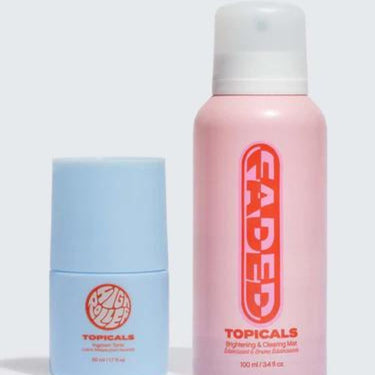Gifting has never been easier
Perfect if you're short on time or are unable to deliver your gift yourself. Enter your message and select when to send it.
Get answers to some of the most frequently asked questions about ingrown hair below!
Ingrown hairs can cause irritation and inflammation, which in turn can lead to acne. This usually happens when the ingrown hair gets infected, which can lead to redness and swelling. In order to prevent this from happening, it is important to exfoliate regularly and use products specifically designed for ingrown hairs.
Ingrown hairs occur when the hair begins to grow back into the skin instead of growing out. This is usually caused by dead skin cells blocking the pore, shaving or waxing too closely and not exfoliating regularly. It can be prevented by using proper shaving techniques & exfoliating regularly.
Cleanse the area with warm water to soften the skin. Sterilize tweezers with rubbing alcohol. Gently pull the skin taut and tease out the ingrown hair without plucking it completely. Apply antiseptic after extraction. If irritation persists or the area appears infected, consult a dermatologist. Avoid tweezing repeatedly.
An ingrown hair occurs when a shaved or tweezed hair grows back into the skin, causing inflammation. It forms often due to dead skin clogging a hair follicle, forcing the hair to grow sideways under the skin, rather than upward and outward. It's more common in people with curly hair.
Ingrown hairs develop when hairs curl back or grow sideways into the skin, often after shaving, waxing, or tweezing. This can be due to tight clothing, thick or curly hair types, or dead skin blocking hair follicles. Inflamed follicles can result in painful, pimple-like bumps or infection.
Yes, people with curly, coarse hair types are more prone to ingrown hairs, particularly those with high levels of sex hormones which can cause excessive hair growth. This condition is more common in men, especially African American men, who shave facial hair and in women who shave their legs and armpits.
Acne is usually characterized by whiteheads or blackheads and can occur anywhere on the body, while an ingrown hair is typically a red, swollen bump that forms where hair grows and may have a visible hair inside. Ingrown hairs also often appear after shaving or waxing.
Yes, improper shaving can lead to ingrown hairs. Shaving too closely, using a blunt blade, or shaving against the hair growth can cause hair to retract below the skin and grow inward, leading to irritation and red bumps commonly known as razor bumps or ingrown hairs.
Ingrown hairs commonly appear in areas where hair is coarser and shaving occurs regularly, such as the beard area in men, and the armpits, legs, and pubic region in both men and women. Friction from tight clothing can also exacerbate ingrown hairs in these areas.
Yes, ingrown hairs can lead to scarring or darkened skin, known as post-inflammatory hyperpigmentation, especially if the area is repeatedly irritated or if there’s an attempt to forcibly remove the hair. Proper treatment and gentle skin care can help minimize these risks.
